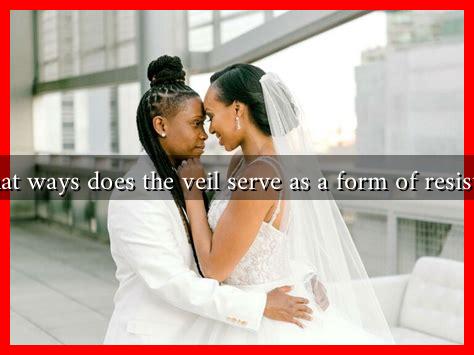-
Table of Contents
In What Ways Does the Veil Serve as a Form of Resistance?
The veil, often associated with various cultural and religious practices, has become a symbol of resistance for many women around the world. While it can be seen as a tool of oppression in some contexts, for others, it represents autonomy, identity, and defiance against societal norms. This article explores the multifaceted role of the veil as a form of resistance, examining its implications in various cultural and political landscapes.
The Veil as a Symbol of Identity
For many women, wearing a veil is a powerful assertion of their identity. It can signify a connection to cultural heritage, religious beliefs, and personal values. In this context, the veil serves as a form of resistance against the homogenization of culture and the pressures of Westernization. Women who choose to wear the veil often do so to reclaim their narrative and assert their individuality in a world that frequently seeks to define them.
- Personal Empowerment: The act of choosing to wear a veil can empower women by allowing them to express their beliefs and values openly.
- Cultural Preservation: In societies where globalization threatens traditional practices, the veil can serve as a means of preserving cultural identity.
- Defiance Against Stereotypes: By wearing a veil, women can challenge stereotypes and misconceptions about their culture and religion.
Political Resistance and Social Commentary
The veil has also been used as a form of political resistance. In various contexts, women have donned the veil to protest against oppressive regimes or to make statements about their rights. For instance, during the Arab Spring, many women wore the veil as a symbol of their resistance against authoritarian governments. This act was not merely about clothing; it was a powerful statement of defiance and a call for change.
- Protests and Movements: In countries like Iran, women have used the veil as a symbol of resistance against government-imposed dress codes.
- Visibility in Activism: The veil can serve to highlight women’s issues in political discourse, drawing attention to their struggles and aspirations.
- Global Solidarity: The veil has become a symbol of solidarity among women across different cultures, uniting them in their fight for rights and freedoms.
Challenging Western Narratives
The portrayal of the veil in Western media often leans towards a narrative of oppression. However, many women who wear the veil challenge this perspective by asserting their agency. They argue that the choice to wear a veil is often misrepresented and that it can be a form of empowerment rather than subjugation. This challenges the dominant narrative and encourages a more nuanced understanding of women’s choices.
- Counter-Narratives: Women like Malala Yousafzai and Ayaan Hirsi Ali have spoken about the complexities surrounding the veil, emphasizing that it can be a choice rather than an imposition.
- Media Representation: The portrayal of veiled women in media often lacks depth, failing to capture the diversity of experiences and motivations behind wearing the veil.
- Academic Discourse: Scholars like Leila Ahmed and Lila Abu-Lughod have contributed to the discourse on the veil, arguing for a more nuanced understanding of its significance.
Case Studies: The Veil in Different Contexts
Examining specific case studies can provide insight into how the veil serves as a form of resistance in various contexts:
- France: The ban on the burqa in public spaces has led to protests by Muslim women who view the ban as an infringement on their rights. Their resistance highlights the complexities of freedom and choice.
- Afghanistan: During the Taliban regime, the burqa was enforced as a means of control. However, women who resisted this imposition by advocating for their rights used the veil as a symbol of their struggle.
- Turkey: The headscarf ban in universities sparked significant protests, with women using the veil to assert their right to education and personal choice.
Conclusion
The veil serves as a complex symbol of resistance, embodying a range of meanings that vary across different cultural and political contexts. For many women, it represents empowerment, identity, and defiance against societal norms. As discussions around the veil continue to evolve, it is essential to recognize the diverse experiences of women who wear it and to challenge the dominant narratives that often misrepresent their choices. Ultimately, the veil is not merely a piece of clothing; it is a powerful statement of agency and resistance in a world that often seeks to define women’s identities for them.
For further reading on this topic, you can explore resources such as Al Jazeera and BBC News.

